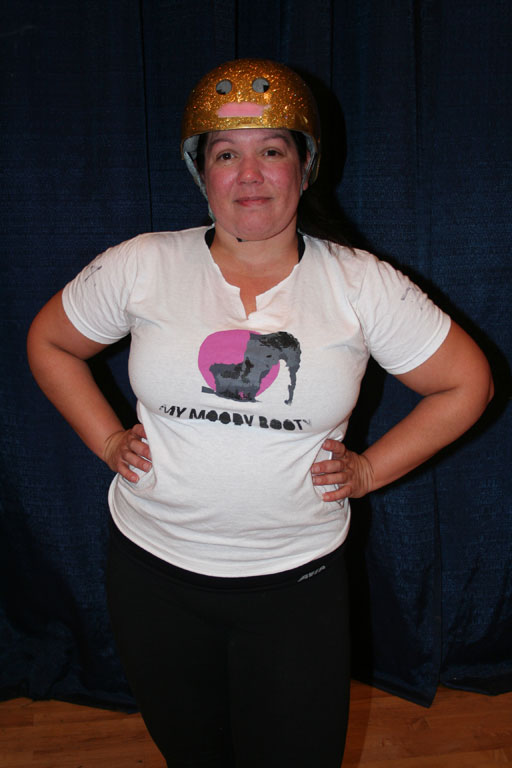
Derby name: Ivana Tripabitch
Real name: Elissa Zadrozny, 41 years old
Team: Cherry Blossom Bombshells
Position: Pivot
Injuries: Sprained an ankle during the second day of training. Took two weeks off, and sprained another ankle recently. She also hit her head on the floor but didn't go to the doctor. It all worked out in the end.
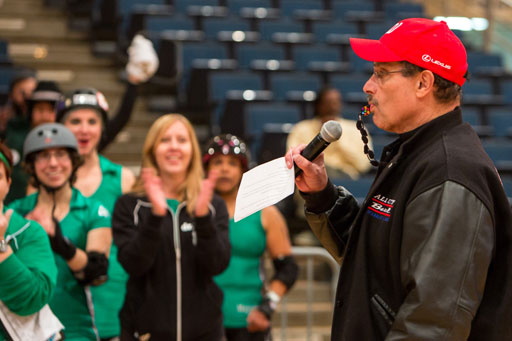
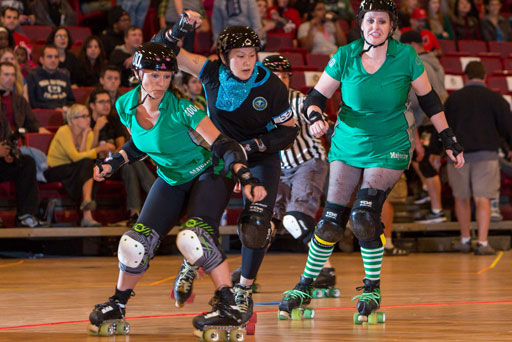
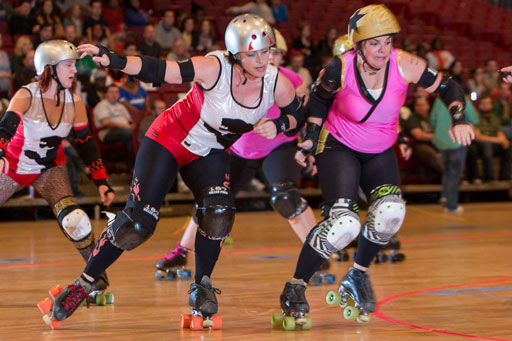
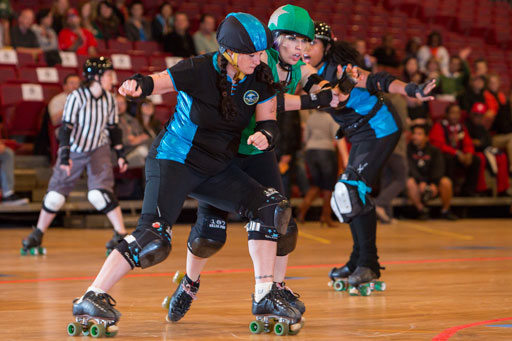
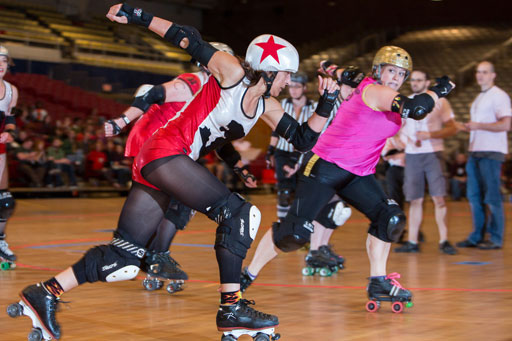
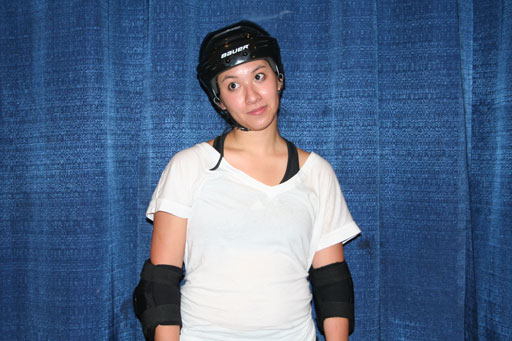
Derby name: Kung Pow Kitten
Real name: Sophia Yen, 22 years old
Team: DC DemonCats
Position: Jammer, occasional blocker
Fun fact: Has only been skating for three months, and bought her first pair of skates in August. Saturday will be her first bout.
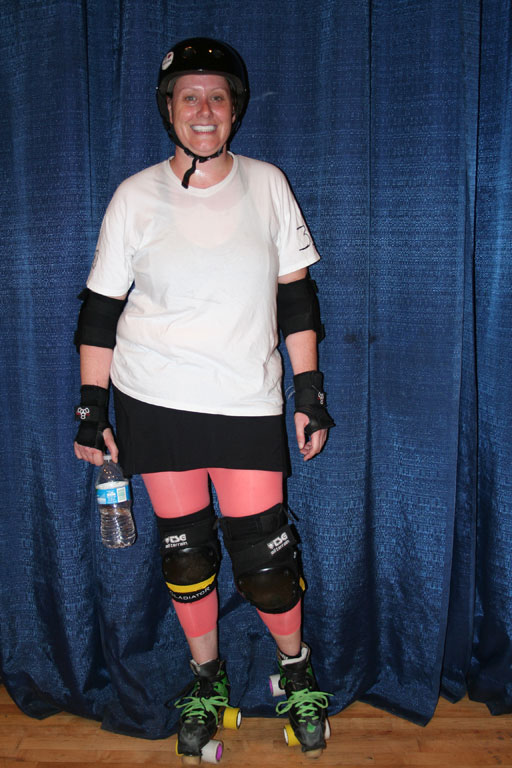
Derby name: Maiden Smackron
Real name: Diane Wilkinson, 37 years old
Team: Majority Whips
Position: Blocker, occasional pivot
Fun fact: Works for Sen. Sherrod Brown, who represents her home state of Ohio
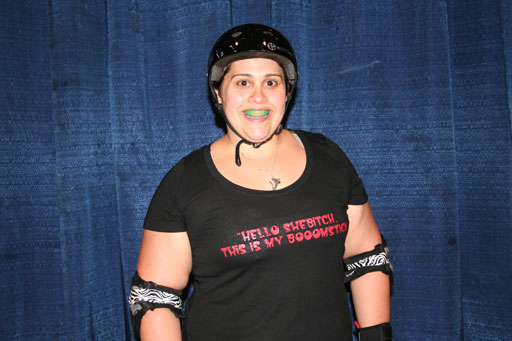
Derby name: Grreen Eggs & Wham!
Real name: Samantha McGovern, 29 years old
Team: Majority Whips
Position: Blocker
On her derby name:
"There are two [letter] 'R's in Grreen on purpose. When I was learning how to skate, I would kind of grunt slash growl when I hit people. It's like I had to be there mentally to achieve the action."
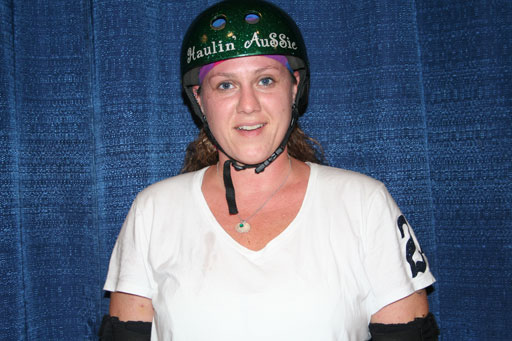
Derby name: Haulin AuSSie
Real name: Natalie Rosentel, 33 years old
Team:Cherry Blossom Bombshells
Position: Pivot, jammer
On being a DC Rollergirl:
"Each and every girl on this team does something to help this team, to make it exist. Everyone puts extra hours into this just to keep it going. If it wasn't for them, there wouldn't be a DC Rollergirls team."
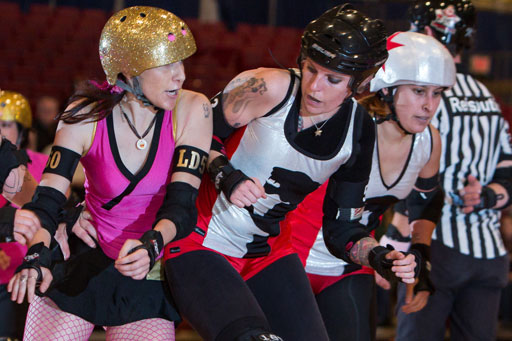
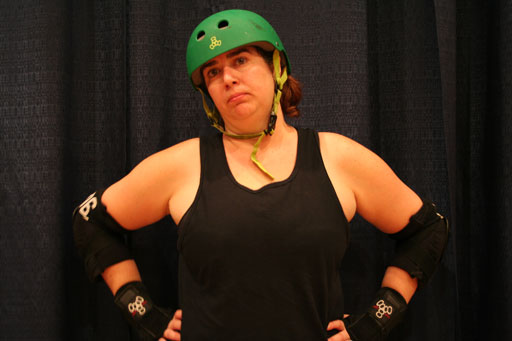
Derby name: Styx N Stones
Real name: Melissa Cooper, 33 years old
Team: Majority Whips, co-captain
Position: Pivot, blocker
On her derby name:
"It's a mix of Styx the band and the Rolling Stones. It's a rock and roll name."
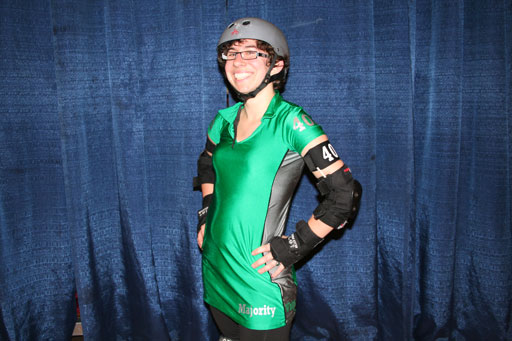
Derby name: Oxford Commakaze
Real name: Emily Gerston, 23 years old
Team: Majority Whips
Position: Jammer, blocker
On her derby name:
"I wanted something spectacularly nerdy. However, Helvetica was taken so I had to get creative."
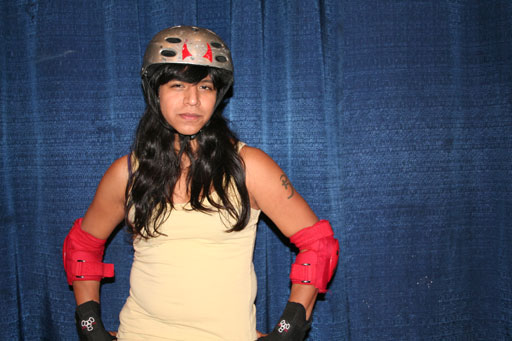
Derby name: Nina Ninja
Real name: Laya Monarez, 29 years old
Team: DC DemonCats
Position: Jammer
Injuries:
Has sprained both ankles and a wrist. She can't feel the backside of one knee due to nerve damage."
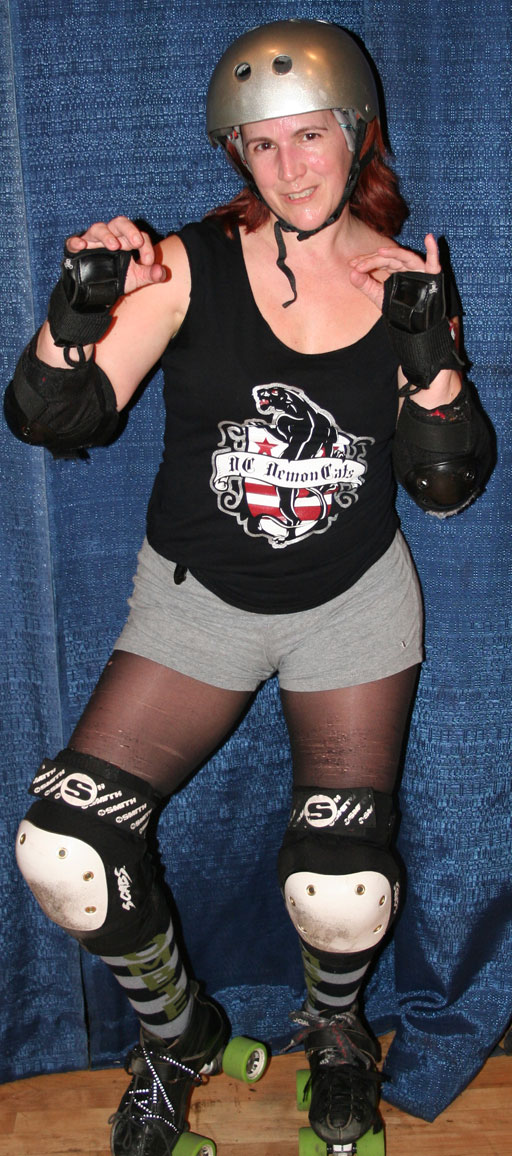
Derby name: Mini Vandal
Real name: Carol Wilkes, 42 years old
Team: DC DemonCats
Position: Blocker
On her derby name:
"I drive a cool, awesome minivan. I'm trying to rock it - trying to make the soccer moms cool again."
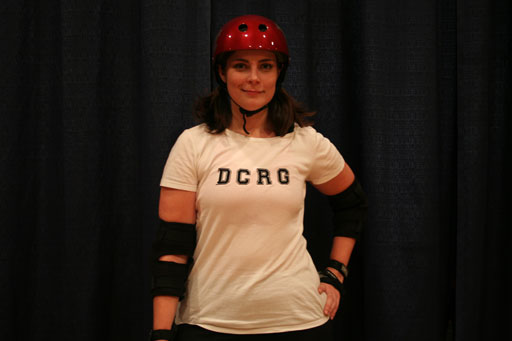
Derby name: Bad Asset
Real name: Jennifer Judge, 31 years old
Team: DC DemonCats
Position: Blocker
Injuries: During a pileup, another rollergirl stepped on her knee. They were playing on top of an ice rink that had started to collect condensation.

Derby name: Dyke Diggler
Real name: Peggy Sue (no last name given), 43 years old
Team: Scare Force One
Position: Blocker
On her derby name:
"I was looking for the gayest derby name I could possibly find and a teammate gifted it to me."
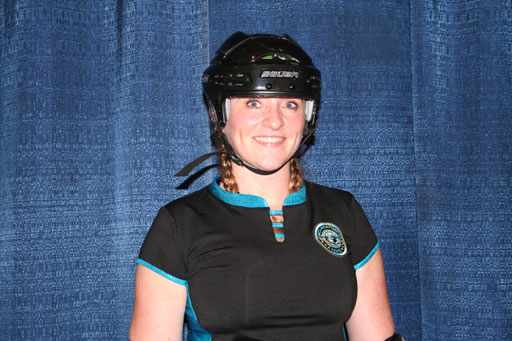
Derby name: Hanky Spanky
Real name: Cheryl Hanke, 39 years old
Team: Scare Force One
Position: Blocker
Injuries: Two broken legs. Left leg has a titanium rod.
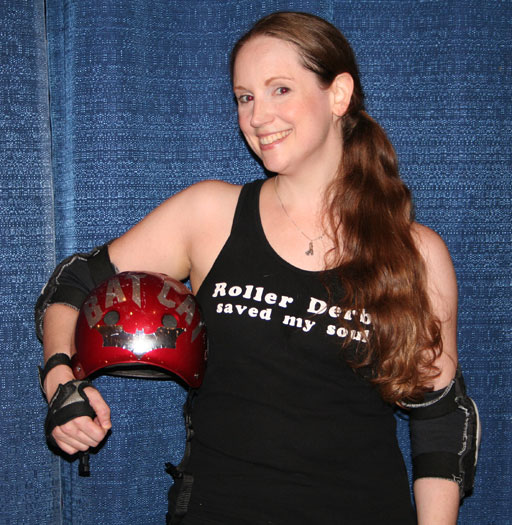
Derby name: Bat Cat
Real name: Christy Chason, 34 years old
Team: DC DemonCats
Position: Blocker
On her derby name:
"First of all, I love Batman. But most importantly, my father served in the 553rd reconnaissance wing in the Vietnam war in the Air Force and the airplanes they flew out of that wing were called Batcats. It has a lot of personal meaning to me."
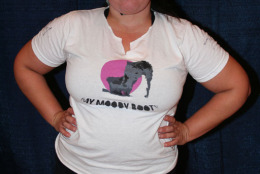
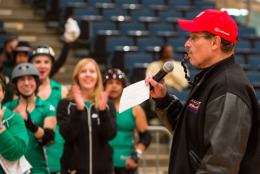
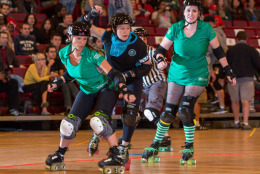
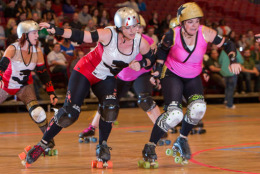
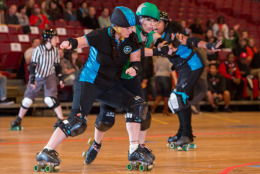

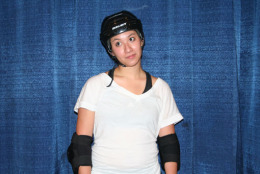
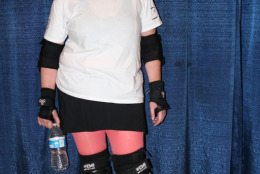
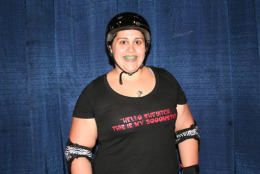

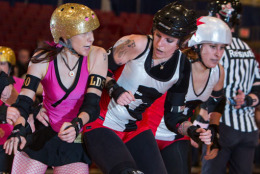
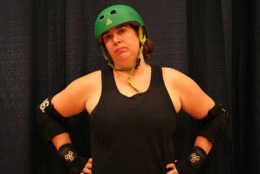
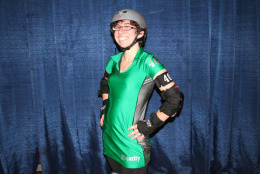
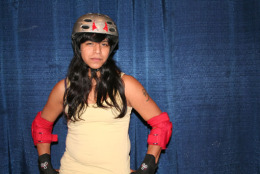
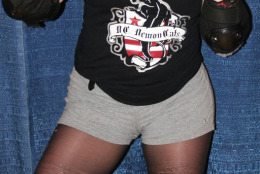
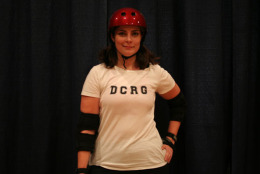

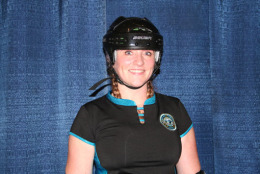
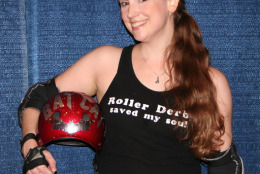
WASHINGTON – For the women who play it, roller derby is more than a sport. Weeknights are scheduled around practices, weekends are taken up by bouts and broken bones are just part of the game.
What started as a World War II-era spectacle has turned into a full-contact sport complete with helmets, knee pads and mouth guards.
In the 1970s and 1980s, roller derby looked a lot like the World Wrestling Federation: Flamboyant costumes and senseless violence drew cynical crowds just looking for a fight.
The sport has since evolved into a game filled with suspense and strategy, but that doesn’t mean the crazy names and torn fishnet stockings are gone. Sometimes dressing up also means getting beaten up when it comes to the DC Rollergirls.
On a blustery Monday night, the D.C. Armory is transformed into a maelstrom of skates and sparkles. Women from throughout the region arrive from work or after class. A skater’s adolescent daughter helps her mom’s teammates prepare for practice.
“When I first saw it live, I immediately knew I wanted to try it,” says Christy Chason, who skates for the DC DemonCats under the moniker Bat Cat.
That refrain is heard again and again from the Rollergirls. Because the current incarnation of roller derby is new within the last decade or so, even the most veteran of skaters only have a few years of experience. Everyone is essentially new to the sport, and almost everyone claims to have been converted the first time they saw a bout.
“I was 38 and realized that my coolness factor wasn’t there anymore and I had to do something,” says Carol Wilkes, also known as Mini Vandal.
After a quick online search for roller skating, the recently divorced mother stumbled upon roller derby. She collected a group of friends and went to a bout.
“We pull up … and there’s a couple of biker dudes and the [other moms] wouldn’t go in. I finally convinced them after 30 minutes,” she says. “We got there, they hated it and I fell in love with it immediately.”
Roller derby can look a little like rugby on skates to the uninitiated, but the actual sport is much more complicated:
- Two teams line up on the track with five members each. Blockers skate in a pack, hip-checking and preventing the “jammer,” designated by a star on her helmet, from passing them.
- Each skater a jammer passes is a point scored. Extra points are awarded when one jammer, typically the fastest and sneakiest skater, laps the opposing team’s jammer.
- During each round, known as a jam, both teams assist their own jammers while also preventing the other team’s jammer from breaking their line, effectively playing offense and defense at the same time.
“My favorite thing about roller derby is that anyone can do it,” says Emily Gerston, or Oxford Commakaze. “There are people who have come into derby literally not knowing how to stand up on skates who are now absolutely amazing skaters.”
DC Rollergirls formed in 2006 with skaters practicing in a Rosslyn parking garage. One year later, the league celebrated its first bout. Since then, it has expanded to include more than 70 skaters, who all volunteer their free time to arrange practices, procure venues and even sell concessions on game days.
Meet some of the DC Rollergirls by clicking on the image gallery above, and check out their next bout Saturday at the Dulles Sportsplex in Sterling, Va. Click here for ticket information.
Watch the video below to see them in action:
Follow @WTOP on Twitter.
(Copyright 2012 by WTOP. All Rights Reserved.)







